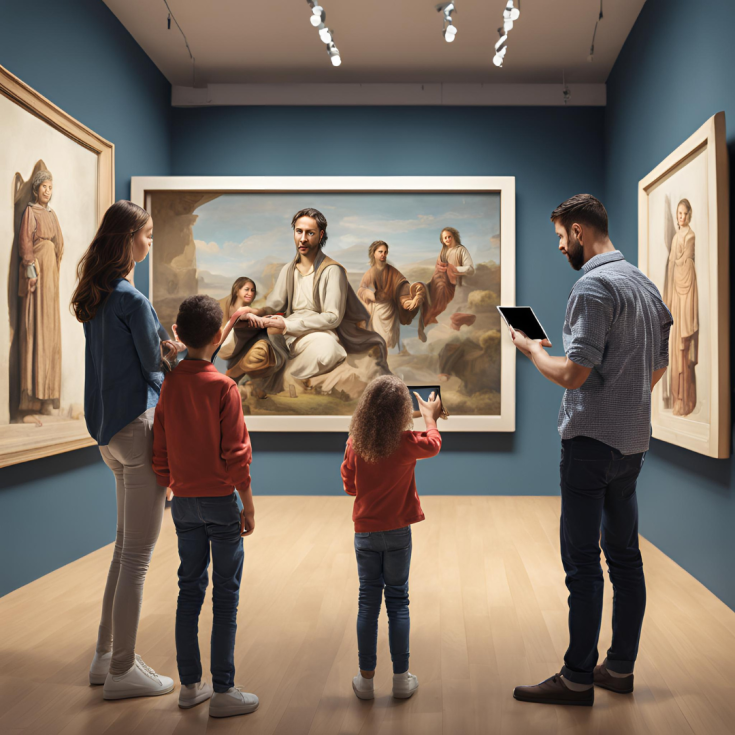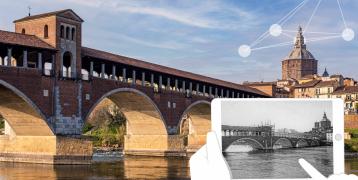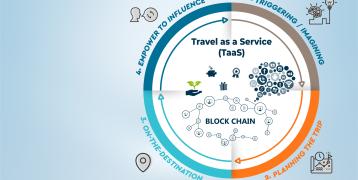How digitalisation transforms tourism, heritage preservation and cultural activities

In recent years, digitalisation has become a powerful force for change, revolutionising various industries worldwide. Among the sectors most impacted by this wave of innovation are heritage preservation, cultural activities, and tourism promotion. The integration of digital tools is not only transforming how we preserve and share cultural heritage, but also redefining the experiences of visitors, making cultural institutions more engaging and accessible.
By fostering participation and broadening the range of actors involved in heritage preservation, digitalisation is altering the landscape of cultural tourism. This story of change can be explored through three key areas: enhancing accessibility, making cultural experiences more engaging, and fostering collaborative preservation efforts.
Digitalisation enhances accessibility to heritage
One of the most transformative impacts of digitalisation has been the ability to make cultural institutions more accessible to diverse audiences. Historically, access to museums, historical sites, and cultural artefacts was limited by geographical, financial and social barriers. Today, with the help of digital tools, institutions are removing these limitations, bringing heritage to people’s screens around the globe.
The CHRISTA project on Culture and Heritage for Responsible, Innovative and Sustainable Tourism Actions highlighted the Thessaloniki Museum of Byzantine Culture as an excellent example of enhanced accessibility to culture through digitalisation. Its digital guide, puzzles and games make its collections accessible to a broader audience. This led to an increase in the number of visitors.
The creation of online exhibits and digital collections allows institutions to transcend physical boundaries. As described by Innocastle project, the UK National Trust has made more than 1.1 million items for over 200 historic places and museum available online.
This digital accessibility is especially crucial for individuals with disabilities, or those living far from cultural hubs. Digital platforms democratise access to heritage, empowering a more inclusive audience to engage with the past. In this way, digitalisation becomes a tool not just for preservation but for expanding the narrative around cultural heritage to a broader and more diverse audience.
Cultural institutions merge education with entertainment
Digitalisation has also opened new doors for cultural institutions to become not only sites of learning but also spaces for entertainment and interactive experiences. This shift aligns with the growing demand for “edutainment” — the combination of education and entertainment — which caters to the preferences of modern audiences, particularly younger generations.
The above-mentioned CHRISTA project showed how the Riga Motor Museum turned this concept into practice. Through innovative digitisation efforts, it has created an “amusing museum” model. This approach introduces elements of gamification, interactive storytelling, and virtual experiences, making learning about automobile history fun and engaging. Visitors can engage creatively and use immersive technologies such as augmented reality (AR).
Digitalisation thus transforms cultural institutions from static repositories of artefacts into dynamic, living spaces that adapt to the needs of contemporary visitors. It helps museums and heritage sites become hubs where history meets technology, offering something for everyone—from children and tourists to scholars and enthusiasts.
Digital tools mobilise broader communities in heritage preservation
Digitalisation does more than simply enhance the visitor experience; it also plays a pivotal role in broadening the scope of heritage preservation by mobilising various actors, from local communities to the general public. By integrating digital tools into heritage conservation, institutions and initiatives can promote sustainable tourism, foster community engagement, and support environmentally conscious practices.
The “Cycling Route 1629” in the Netherlands, which retraces the line of fortifications from the Siege of ‘s-Hertogenbosch was identified as a good practice by the KEEP ON project. It integrates digital mapping and storytelling and was developed in cooperation between regional authorities and volunteer organisations such as the ‘Green Fortress Foundation’ and the ‘Circle of Friends of ’s-Hertogenbosch’.
Furthermore, digital platforms allow communities and the public to participate directly in heritage preservation efforts. Digital tools such as geolocation apps, interactive maps, and social media channels invite users to contribute by sharing stories, photos, or data on historical landmarks. These platforms help create a more participatory model of preservation, turning everyday people into stewards of their cultural heritage.
Digitalisation is therefore more than just a technological shift; it represents a new era for heritage preservation, cultural activities, and tourism promotion. Through digital tools, cultural institutions can now connect with a broader and more diverse audience, making heritage accessible, engaging, and inclusive. Digitalisation fosters deeper connections between individuals and their cultural history by combining education with entertainment and providing immersive, interactive experiences. At the same time, it empowers communities and the public to play an active role in preserving their own heritage.
For more inspirational examples of how digitalisation transforms heritage preservation, cultural activities, and tourism promotion, you can take a look at other good practices identified within these ongoing Interreg Europe projects:



